Distribution and morphology of calcitonin gene-related peptide (CGRP) innervation in flat mounts of whole rat atria and ventricles
- PMID: 38211380
- PMCID: PMC11639590
- DOI: 10.1016/j.autneu.2023.103127
Distribution and morphology of calcitonin gene-related peptide (CGRP) innervation in flat mounts of whole rat atria and ventricles
Abstract
Calcitonin gene-related peptide (CGRP) is widely used as a marker for nociceptive afferent axons. However, the distribution of CGRP-IR axons has not been fully determined in the whole rat heart. Immunohistochemically labeled flat-mounts of the right and left atria and ventricles, and the interventricular septum (IVS) in rats for CGRP were assessed with a Zeiss imager to generate complete montages of the entire atria, ventricles, and septum, and a confocal microscope was used to acquire detailed images of selected regions. We found that 1) CGRP-IR axons extensively innervated all regions of the atrial walls including the sinoatrial node region, auricles, atrioventricular node region, superior/inferior vena cava, left pre-caval vein, and pulmonary veins. 2) CGRP-IR axons formed varicose terminals around individual neurons in some cardiac ganglia but passed through other ganglia without making appositions with cardiac neurons. 3) Varicose CGRP-IR axons innervated the walls of blood vessels. 4) CGRP-IR axons extensively innervated the right/left ventricular walls and IVS. Our data shows the rather ubiquitous distribution of CGRP-IR axons in the whole rat heart at single-cell/axon/varicosity resolution for the first time. This study lays the foundation for future studies to quantify the differences in CGRP-IR axon innervation between sexes, disease models, and species.
Keywords: Atria; Calcitonin gene-related peptide; Heart; Intrinsic cardiac ganglia; Vasculature; Ventricles.
Copyright © 2023 Elsevier B.V. All rights reserved.
Conflict of interest statement
Declaration of competing interest No potential conflicts of interest were disclosed.
Figures
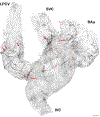


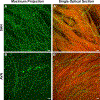


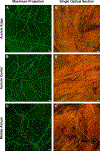
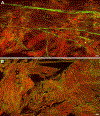
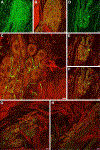


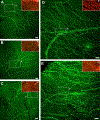

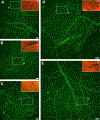

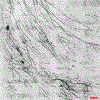
Similar articles
-
Distribution and morphology of CGRP-IR axons in flat-mounts of whole male and female mouse atria.Auton Neurosci. 2025 Apr;258:103221. doi: 10.1016/j.autneu.2024.103221. Epub 2024 Nov 29. Auton Neurosci. 2025. PMID: 39879734
-
Chronic intermittent hypoxia remodels catecholaminergic nerve innervation in mouse atria.J Physiol. 2024 Jan;602(1):49-71. doi: 10.1113/JP284961. Epub 2023 Dec 29. J Physiol. 2024. PMID: 38156943 Free PMC article.
-
Catecholaminergic axon innervation and morphology in flat-mounts of atria and ventricles of mice.J Comp Neurol. 2023 Apr;531(5):596-617. doi: 10.1002/cne.25444. Epub 2023 Jan 2. J Comp Neurol. 2023. PMID: 36591925 Free PMC article.
-
Preventive drug treatments for adults with chronic migraine: a systematic review with economic modelling.Health Technol Assess. 2024 Oct;28(63):1-329. doi: 10.3310/AYWA5297. Health Technol Assess. 2024. PMID: 39365169 Free PMC article.
-
Endovenous ablation therapy (laser or radiofrequency) or foam sclerotherapy versus conventional surgical repair for short saphenous varicose veins.Cochrane Database Syst Rev. 2016 Nov 29;11(11):CD010878. doi: 10.1002/14651858.CD010878.pub2. Cochrane Database Syst Rev. 2016. PMID: 27898181 Free PMC article.
Cited by
-
Distribution and morphology of CGRP-IR axons in flat-mounts of whole male and female mouse atria.Auton Neurosci. 2025 Apr;258:103221. doi: 10.1016/j.autneu.2024.103221. Epub 2024 Nov 29. Auton Neurosci. 2025. PMID: 39879734
-
Spinal Afferent Innervation From Left Dorsal Root Ganglia in the Flat-Mounts of Whole Atria of Rats: Anterograde Tracing.J Comp Neurol. 2024 Dec;532(12):e25681. doi: 10.1002/cne.25681. J Comp Neurol. 2024. PMID: 39620894
References
-
- Randhawa PK & Jaggi AS A review on potential involvement of TRPV1 channels in ischemia–reperfusion injury. J. Cardiovasc. Pharmacol. Ther 23, 38–45 (2018). - PubMed
-
- Tritthart HA et al. Membrane Actions of Calcitonin Gene-Related Peptide in Cardiac and Smooth Muscle Myocytesa. Ann. N. Y. Acad. Sci 657, 216–227 (1992). - PubMed
-
- Rubino A, Ralevic V. & Burnstock G. Calcitonin gene-related peptide (CGRP)-evoked inotropism during hyper- and hypo-sensory-motor innervation in rat atria. J. Auton. Pharmacol 17, 121–127 (1997). - PubMed
Publication types
MeSH terms
Substances
Grants and funding
LinkOut - more resources
Full Text Sources
Molecular Biology Databases
Research Materials

